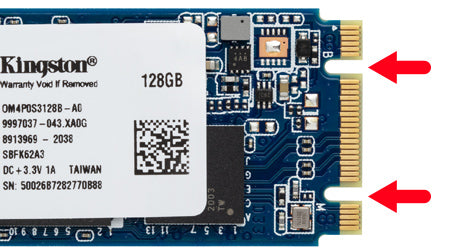The Universal Serial Bus (USB) was created in 1994 to standardize external connections to electronic devices like laptops and smartphones. Its use has grown significantly over the years due to its convenience and cost-effectiveness. USBs have largely replaced traditional interfaces such as serial ports worldwide.
With increased demand comes significant progress. The quality and variety of USBs have greatly improved, and USB-C represents the latest evolution in the world of USB technology.
Despite making its debut in 2014, USB-C has only recently gained widespread recognition.
Additionally, the connectors are more rounded and, excitingly, symmetrical. This means that USB-C charging cables can be connected to devices regardless of their orientation—it works from both sides!
Finally, USB-C cables typically support backward compatibility with USB-A devices. Given that USB-A has been the predominant cable interface for years, many users may still have devices with only USB-A ports. Thankfully, USB-C cables can easily connect to these ports with the help of a suitable adapter, without compromising performance.
This difference is primarily due to the higher power delivery capacity of USB-C cables compared to USB Type A and B. As a result, USB-C cables can deliver more power to compatible electronic devices, leading to faster charging.
An increasing number of digital companies (such as Intel, Xiaomi, Apple, and many more) are producing products with built-in compatibility with Type-C cables. USB-C ports are gradually being integrated into more devices, with the aim of eventually replacing traditional USB-A ports.
As a result, it's a good idea to consider purchasing devices with USB-C compatibility or acquiring USB-C adapters to ensure access to the benefits of USB-C technology.
Most USB-C charging cables are designed to support multi-line data transfer operations. This results in achieving a higher data transfer rate, enabling faster performance and more efficient data syncing.
USB-C cables are well-known for their ability to carry and display high-resolution 4K and 8K videos on large screens, such as TVs or car screens, without experiencing bothersome lag.
Additionally, processes like backing up photos from your phone to the desktop can occur seamlessly in a matter of minutes.
With increased demand comes significant progress. The quality and variety of USBs have greatly improved, and USB-C represents the latest evolution in the world of USB technology.
Despite making its debut in 2014, USB-C has only recently gained widespread recognition.
What sets USB-C charging cables apart from USB Type-A or USB Type-B, and why are they frequently considered the top charging cable?
USB CABLE INTERFACES
Compared to previous USB cables, USB-C connection cables offer improved ergonomics and are better suited for the current generation. Firstly, USB-C wires are smaller and more compact, making them easier to transport.Additionally, the connectors are more rounded and, excitingly, symmetrical. This means that USB-C charging cables can be connected to devices regardless of their orientation—it works from both sides!
Finally, USB-C cables typically support backward compatibility with USB-A devices. Given that USB-A has been the predominant cable interface for years, many users may still have devices with only USB-A ports. Thankfully, USB-C cables can easily connect to these ports with the help of a suitable adapter, without compromising performance.
CHARGING RATE
A fast and secure charging rate is almost always preferred, making USB-C the better choice for charging cables. When a traditional charging cable is connected to your phone, it may charge up to 30% in 30 minutes. In contrast, a compatible USB-C charging cable can charge up to 55% (or more!) in the same 30 minutes.This difference is primarily due to the higher power delivery capacity of USB-C cables compared to USB Type A and B. As a result, USB-C cables can deliver more power to compatible electronic devices, leading to faster charging.
PORT COMPATIBILITY
Despite USB Type A and B being around for a longer time than USB Type-C, the latter is gaining rapid popularity among the public. In fact, the market value for USB Type-C cables rose to 7.9 billion in 2019. Therefore, it's safe to say that USB-C connecting cables are the new "in-thing" of the decade.An increasing number of digital companies (such as Intel, Xiaomi, Apple, and many more) are producing products with built-in compatibility with Type-C cables. USB-C ports are gradually being integrated into more devices, with the aim of eventually replacing traditional USB-A ports.
As a result, it's a good idea to consider purchasing devices with USB-C compatibility or acquiring USB-C adapters to ensure access to the benefits of USB-C technology.
DATA TRANSFER CAPACITY
In the context of USBs, data transfer capacity refers to the speed and limitations of transferring data files, such as videos, audio, or documents, from one device to another through a USB cable connection.Most USB-C charging cables are designed to support multi-line data transfer operations. This results in achieving a higher data transfer rate, enabling faster performance and more efficient data syncing.
USB-C cables are well-known for their ability to carry and display high-resolution 4K and 8K videos on large screens, such as TVs or car screens, without experiencing bothersome lag.
Additionally, processes like backing up photos from your phone to the desktop can occur seamlessly in a matter of minutes.


